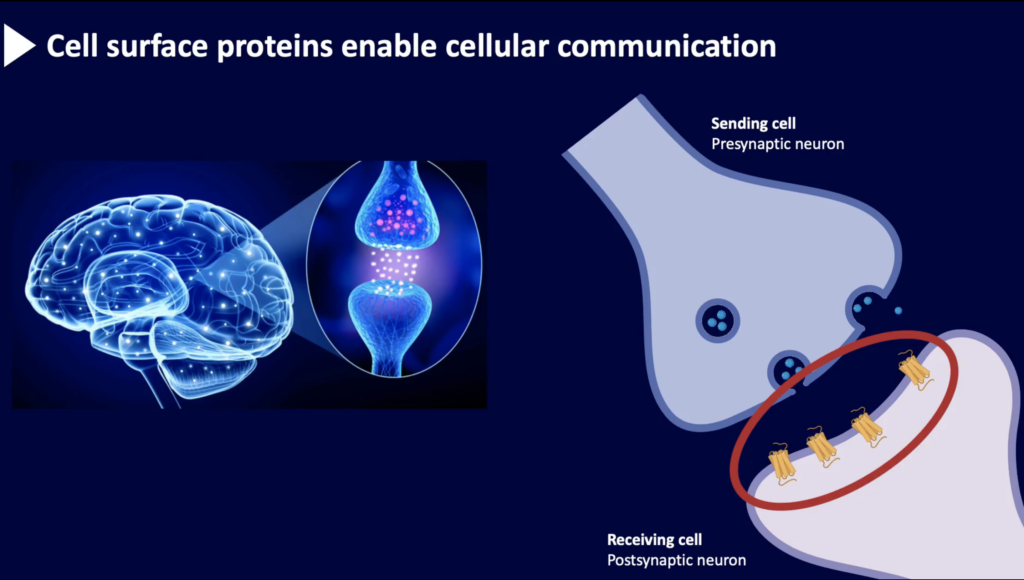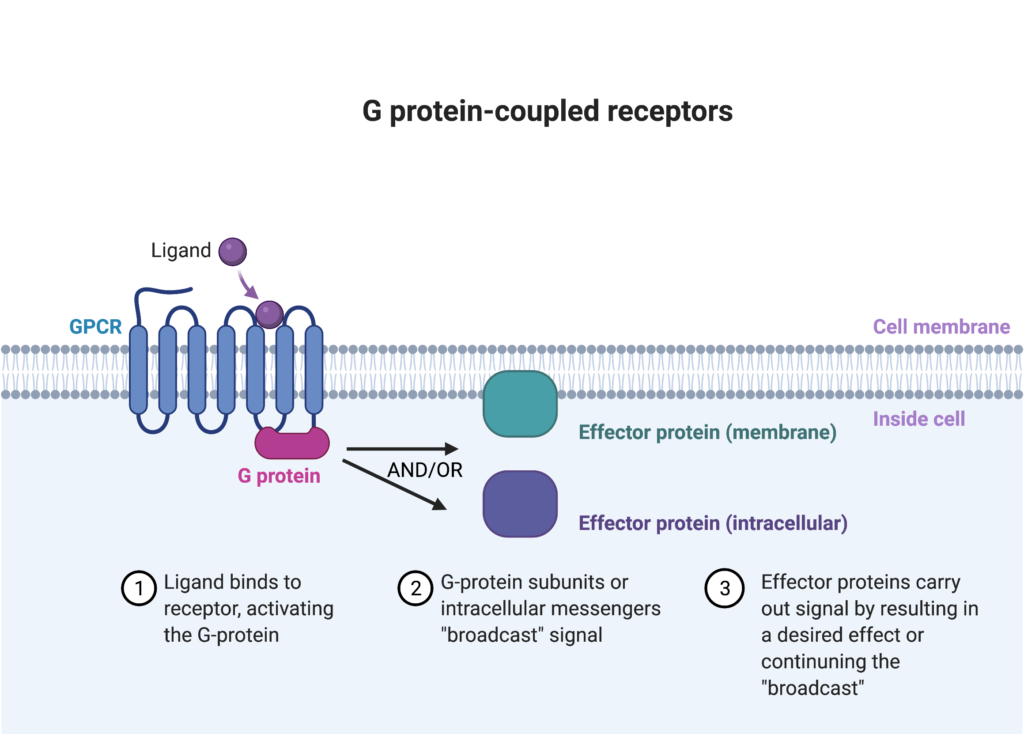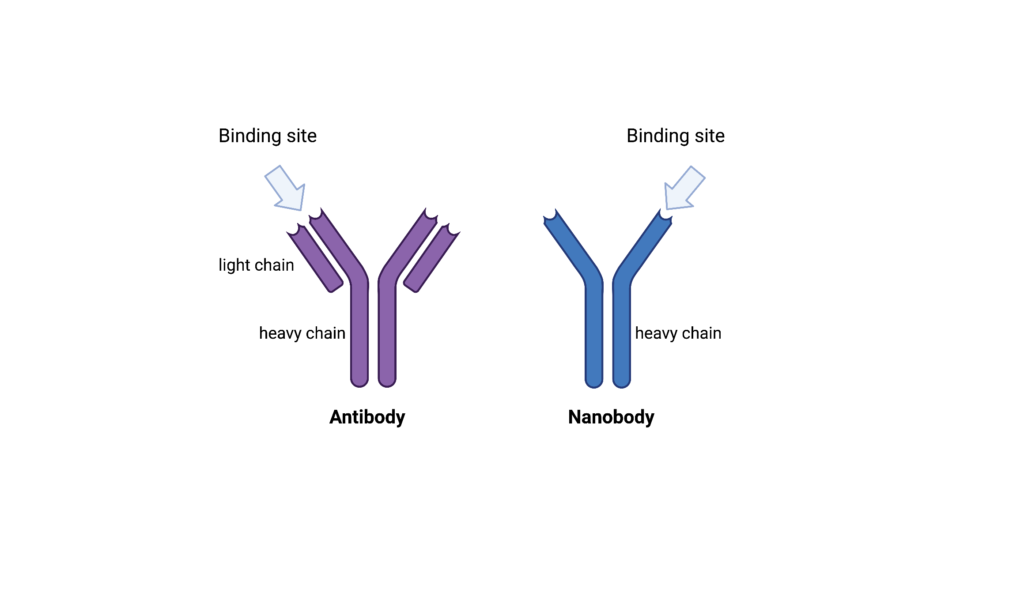Improving Drug Discovery
by Catriona Nguyen-Robertson
RSV Science Communications Officer
This article follows a presentation to the Royal Society of Victoria on 25th September 2021 titled “Improving Drug Discovery: a molecular understanding of cell surface receptors” delivered by Dr Christopher Draper-Joyce (Florey Institute of Neuroscience and Mental Health). Christopher was the recipient of the 2021 Phillip Law Postdoctoral Award.
 The human body is composed of trillions of cells. Each individual cell communicates with others and performs certain tasks within the collective to keep our bodies working. Their ability to send and receive signals is vital, and when communication is disrupted, disease ensues.
The human body is composed of trillions of cells. Each individual cell communicates with others and performs certain tasks within the collective to keep our bodies working. Their ability to send and receive signals is vital, and when communication is disrupted, disease ensues.
Many therapeutic drugs for a multitude of diseases target specific cell receptors – proteins on the cell surface that receive messages. Restore the communication, and you can restore normal function.
Using an interdisciplinary approach, Dr Christopher Draper-Joyce is exploring new, proof-of-concept approaches that promise the development of safer and much improved options for therapeutics. Based at the Florey Institute of Neuroscience and Mental Health, he collaborates with partners around the world to gain different perspectives and ways of tacking scientific problems.
“Dr Draper-Joyce is already making significant advances in our understanding of the molecular mechanisms involved in drug binding and action on membrane receptors; this is a vital area of research.” – Professor Sandra Rees FRSV.
Numerous protein receptors in the body recognise a variety of signals to control cell behaviour. A message in the form of a ligand will bind to a receptor to elicit a response. The largest cell surface receptor family is G protein-coupled receptors (GPCRs). They respond to stimuli outside the cell including neurotransmitters, hormones, metabolites, and even photons of light, kicking off a cascade of molecular events within the cell by broadcasting the signal via effector proteins.
Importantly, because GPCRs are involved in so many cellular responses, they are excellent drug targets. GPCR targets comprise around 25% of all medicines currently approved by the USA’s Food and Drug Administration, highlighting their importance.
Traditional drug discovery approaches focus on the primary site of ligand binding, either aiming to block or enhance signalling. The challenge with this approach, however, is designing a drug that selectively only targets a given GPCR without undesired side effects due to conservation between receptors. With some 1,000 different GPCR types on different cells of the body for different purposes that can be quite structurally similar, it is important that a drug only binds the specific GPCR of interest. For example, pocket of the receptor where ligands such as dopamine, serotonin, acetylcholine and adrenaline bind, all overlap in structure. If a drug binds to the pocket to prevent one of these ligands from interacting with the receptor, it is likely that it will prevent all of them, resulting in unwanted, off-target side effects.
Another challenge in drug discovery is that receptor signalling outputs are typically quite complicated. With each receptor potentially influencing multiple signal outputs, by simply fully blocking or activating GPCRs, drugs may negatively impact other signals in addition to achieving the desired outcome. An alternative approach is therefore to design a drug that modulates the signal rather than completely switching it on or off. Researchers like Christopher search for separate regions on the GPCRs (rather than directly where the normal ligand binds) to which drugs can bind and act as a dimmer switch without completely disrupting signals.

Christopher’s team have recently unlocked the key that could lead to the development of alternative painkillers. With one third of health system expenditure focused on chronic pain, there is an urgent need for non-opioid painkillers. The adenosine A1 receptor protein (a GPCR) has long been recognised as a promising therapeutic target but because adenosine can bind to four different receptors to either enhance or inhibit pain, previous attempts to target the A1 receptor have failed due to undesirable adverse off-target effects.
Using a multidisciplinary approach with preclinical models and microscopy, Christopher and team produced a detailed visualisation of the A1 receptor protein structure. They achieved the first atomic level snapshot of where drugs bind and could therefore design a drug that enhances the ability of adenosine to bind while avoiding binding to a region of the GPCR conserved across other adenosine receptors.
Christopher has taken a second approach to develop another drug targeting the A1 receptor to protect against cardiovascular disease. Manipulating adenosine signalling via the A1 receptor protects heart tissue but also slows heart rate. Christopher therefore worked with a team to design a drug that selectively chooses which signals to “broadcast” within heart cells. By designing a drug that binds to the receptor in a way that slightly alters the receptor’s shape, it can engage the protective pathways without a drop in heart rate.

While most traditional drugs are small molecules that somehow interfere with the ligand-receptor binding, Christopher is now also exploring the use of nanobodies in therapeutics. Antibodies are proteins that bind tightly and specifically to their target cells, and nanobodies are the camelid versions. Their binding sites are long loops, like fingers, that help them reach into the grooves of target receptors. The binding region of conventional antibodies sits between two separate protein chains (a heavy and light), whereas camelids such as alpacas, llamas and camels produce nanobodies that only have a heavy chain. This makes them easier to produce cheaply in bulk and they are more stable than antibodies. Christopher is currently producing nanobodies in alpacas and hopes that nanobodies become viable therapies for cancer and other diseases.
Receptors, particularly GPCRs, are implicated in a plethora of diseases. Through a molecular understanding of the how ligands and receptors interact, and how a drug can modulate the interaction, is greatly advancing drug discovery programs. These new protein visualisation technologies will pave the way for safer and more effective GPCR therapeutics.
In recognition of his remarkable work to date, the Royal Society of Victoria was delighted to award Christopher the 2021 Phillip Law Postdoctoral Award.










